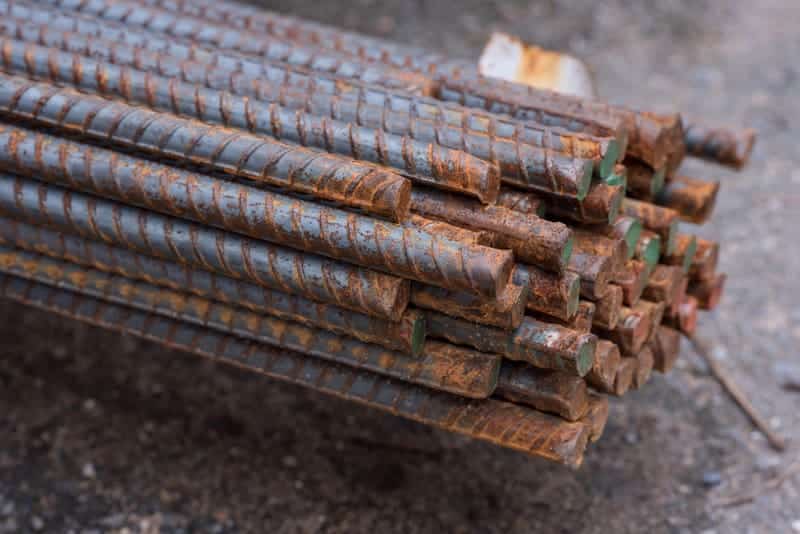“This post contains affiliate links, and I will be compensated if you make a purchase after clicking on my links.”
While looking for some scrap metal to weld, a reader asked me if rebar can be welded. He had a good bit of unused rebar rods from a finished construction business. Therefore I wrote up some useful information on the topic.
Rebar usually consists of a mild steel alloy, which is one of the most common materials to weld. Generally, rebar can be welded when the carbon content in the rebar alloy is less than 2.1%.
And now, without further ado: The ultimate guide to welding rebar – everything you need to know about welding rebar and the role of rebar in construction!
Why is Rebar Necessary In Concrete?
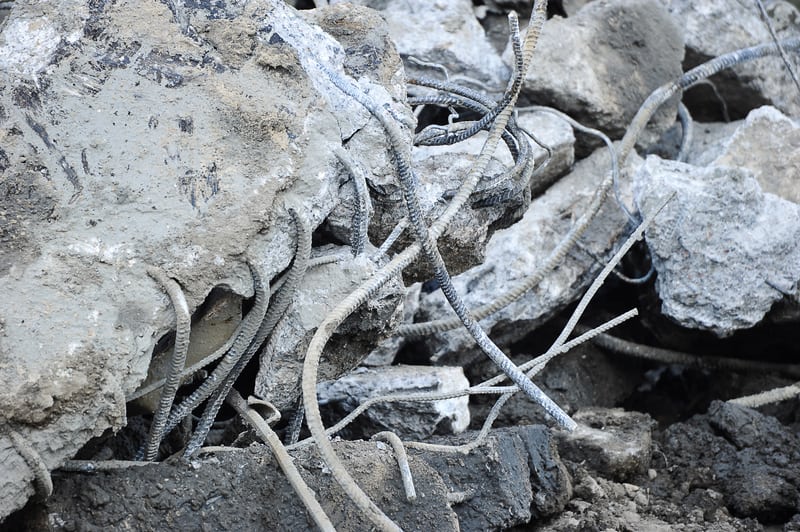
Concrete is one of the most widely used materials in the construction industry for laying the foundations of buildings and structures. With the use of different types of concrete, builders are creating walls, posts, piers, floor slabs, foundations, and much more. Take a closer look at almost any building, and you’re going to find that concrete played a significant role in its construction.
However, it’s not just concrete doing all that work by itself.
No. Concrete by itself is prone to cracks, and if you built using concrete alone, there would be a significant chance that the building would crumble, crack, or simply fall apart in a short period of time.
Concrete is weak in tension but strong when compressed. This means that we need to find a way to increase the tensile strength of concrete so that it will become more reliable and durable. The last thing that anyone wants to see is their new building or construction project cracking and falling apart around them.
So, what is the solution? Rebar. By reinforcing the concrete with mild steel rebar, you greatly increase the tensile strength of the concrete. In the following article, we’re going to take a closer look at rebar, what it is, how it’s made, and cover everything that you need to know about welding rebar.
What Is Rebar?
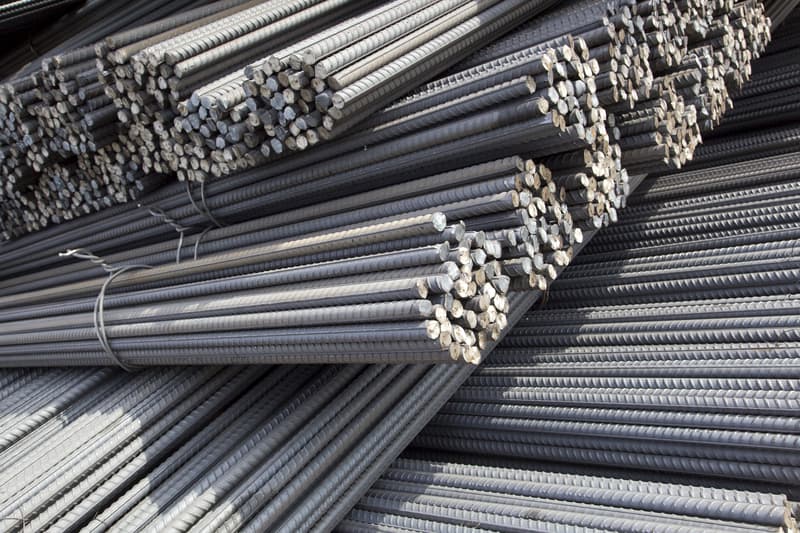
Rebar is sometimes referred to and reinforcement steel or reinforcement bar, but it’s all the same thing when you get right down to it. Rebar is used to greatly improve the tensile and structural strength of concrete. Through the addition of rebar to concrete, concrete can be more widely used in the construction of massive structures.
One of the reasons that you’ll only ever find mild steel used for rebar is because of its thermal expansion coefficient (elongation of the steel due to heat and temperature changes). Rebar has almost an identical thermal expansion coefficient to concrete which means both materials expand and contract at similar rates.
How Does the Rebar Add Strength to the Concrete?
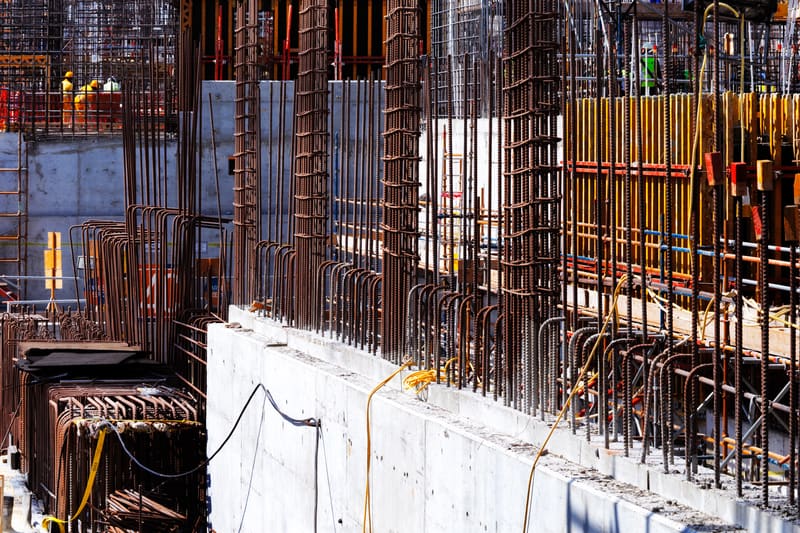
It’s one of the most commonly asked questions surrounding the use of rebar. The wet concrete is poured directly on top of rebar mats, cages, and frames. As the concrete hardens, the rebar is locked into position. As a result, concrete structures which incorporate rebar in their design have much more tensile strength than concrete that doesn’t have rebar.
The design of the rebar will depend on the concrete structure being made. Therefore, posts, walls, and floors will all have different rebar designs, which are usually designed by an engineer.
Which Rebar Can You Weld?
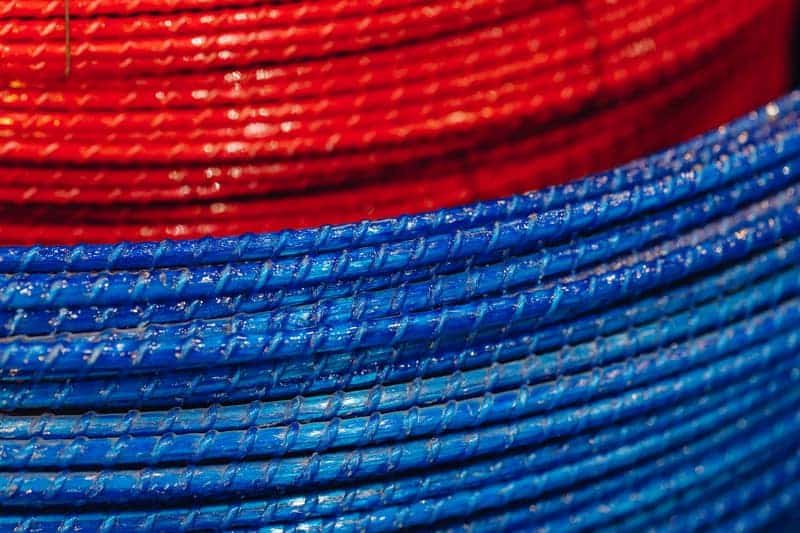
There are a bunch of different grades of rebar and also sizes. Some grades of rebar can be welded, but others can’t be, and another type of fastener must be used to connect and tie all the rebar together until the concrete is poured and hardens. In the next section, we’ll take a closer look at what types of rebar can be welded and which ones can’t!
- Weld-Able Rebar – The structural welding code AWS D1.4 states that low-alloy mild steel rebar is 100% weld-able. The steel-to-carbon ratio of this rebar is what makes it so suitable to be welded. In fact, welded rebar will stay together under immense loads once it has been encased in concrete. This type of rebar is the only rebar that can be easily welded without the need for any additional special considerations.
- Non-Weld-Able Rebar – It is the chemical composition or makeup of the steel in the rebar which determines whether or not it can be welded. The higher the carbon content of the steel, the more brittle it will be and the less suitable the rebar is going to be to being welded. The stress and heat of welding this rebar together are more likely to cause the steel rebar to shatter.
How to Weld Rebar
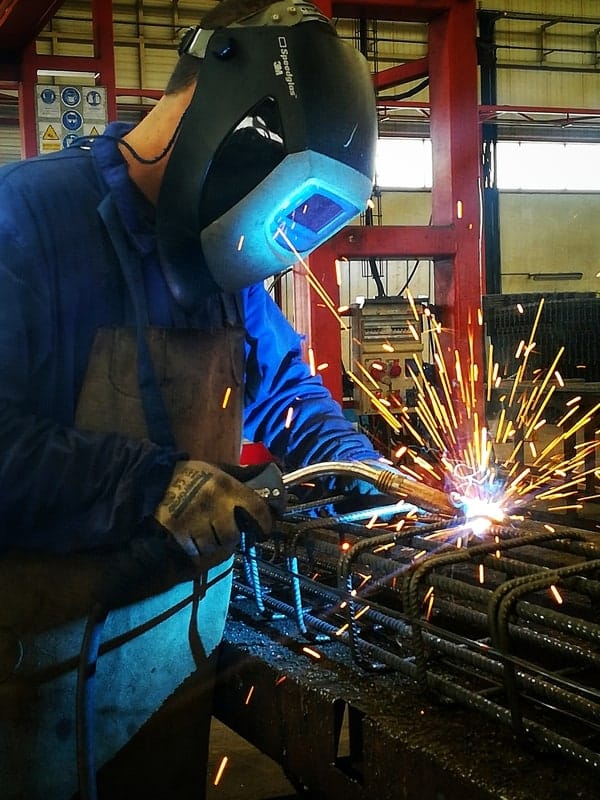
Once you weld the rebar, the rebar will provide you with a strong and rigid structural connection which will not only make rebar mats and cages easier to transport but also helps to ensure that the rebar adds strength to the concrete as it is supposed to.
For many people, welding rebar is unnecessary and even difficult. Still, it is one of the most effective and practical ways to ensure that rebar stays where it is supposed to and serves the purpose that it is supposed to reinforcing the concrete.
Welding rebar is both practical and acceptable if you ensure that all applicable standards and good welding practices are followed. Some of the examples of these include:
- You must choose the right type of rebar to weld.
- You need to determine whether or not preheating of the rebar is required and that the preheating of the rebar is performed when required.
- You must choose the appropriate filler wire or welding rod to weld the rebar.
- The correct weld, weld placement, and preparation of the rebar must be followed.
Choosing the Right Rebar – Different Types of Rebar
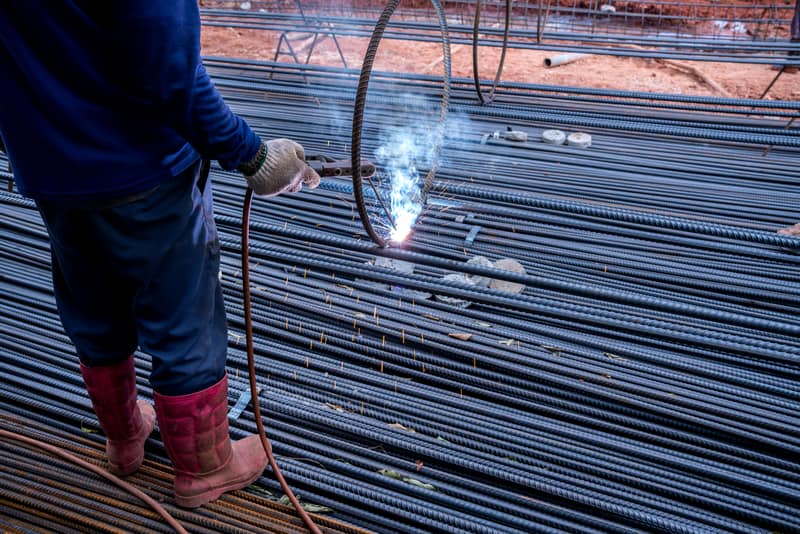
As we mentioned above, there are a variety of different types of rebar. Some of them can be welded, but many types of rebar aren’t suitable for being welded together.
1. Mild Steel Bars
Mild steel bars have a round shape with a smooth or plain surface. You will find mild steel bars available in various sizes anywhere from 6mm through to 50mm. You will usually only find mild steel bars in special projects where the steel bars have to be used like dowels in expansion joints, columns, spirals, and where the mild steel has to slide into a metal sleeve. However, you can cut and bend mild steel bars fairly easily without any special equipment.
2. Deformed Steel Bars
Deformed steel bars are easy to spot because of the deformed surface, which usually features ribs or lugs. The different surface texture of deformed steel bars makes them much easier to transport because they don’t slide around as much as an ordinary steel bar. In addition, the rough and uneven surface of deformed steel bars means that they create a better bond between the concrete and the steel while at the same time limiting many of the cracks which appear around steel which has been used to reinforce concrete.
3. Thermo-Mechanically Treated Bars (TMT Bars)
TMT steel bars have been heat-treated to provide better strength to the concrete that they are reinforcing. So if you are looking for a metal bar that has more bending-ability, flexibility, quality, and weld-ability, then TMT bars would be the best choice.
4. High-Strength Deformed Bars
High-strength deformed bars are the same as deformed steel bars, except they have been cold-treated, which adds strength, flexibility, and weld-ability. Because of the low-carbon content of high-strength deformed bars, they are exceptionally good for welding.
5. Other Types of Rebar
Some of the other types of rebar which aren’t as widely used include European rebar, carbon steel rebar, epoxy-coated rebar, galvanized rebar, stainless steel rebar, and glass-fiber reinforced-polymer rebar. Each of these different types of rebar has its own advantages and disadvantages, and reasons for use, but stainless steel rebar is the most expensive and highest-quality rebar. Your choice of rebar will depend entirely on the application that it’s being used for and is usually specified by an engineer.
When Would You Need to Preheat Rebar Before Welding?
The determination for preheating rebar before welding depends on the size of the rebar which is being welded and also the carbon equivalent. Steel rebar with a high carbon content isn’t as easily welded and will require more preheating to ensure that the welds don’t affect the structural integrity of the rebar.
The easiest way to determine the carbon content of the steel rebar you are planning on using is to request the mill certificate from the supplier. If you can get this information, it could ultimately save you a lot of hassles pre-heating your rebar prior to welding if it doesn’t require it.
What Method Can You Use to Weld Rebar?
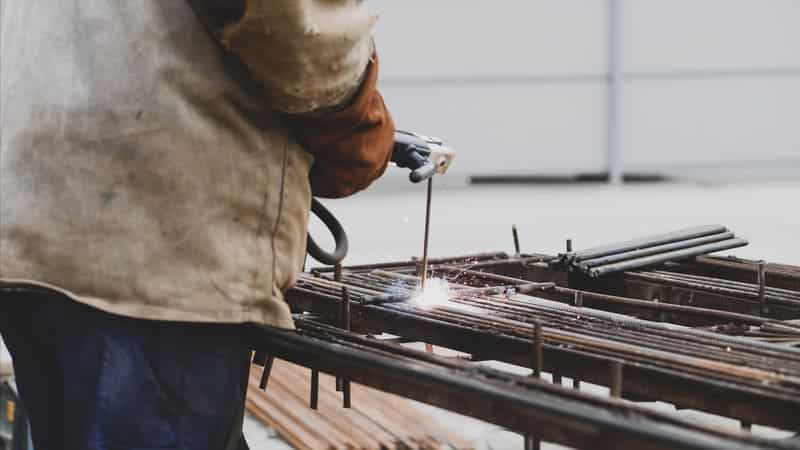
When it comes to welding rebar, you have three main choices in what type of welding process you use:
- SMAW – Shielded Metal Ark Welding (stick/ark welding).
- GMAW – Gas Metal Ark Welding (MIG).
- FCAW – Flux Core Arc Welding.
The choice of filler wire or rod will ultimately depend on the type of rebar which is planning on welding.
You can’t just use any type of weld when you are welding rebar. Before welding, the welder must ensure that the rebar being welded is parallel and perpendicular. However, there are certain types of welds that are allowable when welding steel rebar, and they include:
- Lap Joints – Lap joints are similar to a butt joint, but the ends of two pieces of rebar would be ‘overlapped’ rather than butted together.
- Butt Joints – Butt joints in rebar are similar to other butt welded joints. The two pieces of rebar would be butted together end to end and then welded.
- Splices – Splices are similar to lap joints and one of the preferred ways for rebar to be welded together.
Prior to welding any rebar, it is advised that the welder should ensure that the rebar is all locked into place and won’t move during the pre-heating or welding. If it does move, it may need to be cut and straightened or additional reinforcing used to strengthen the new joint.
Before you weld, you should also ensure that the rebar has been wire brushed or sanded to remove any dirt, oil, or surface scale present on the rebar.
Frequently Asked Questions About Welding Rebar
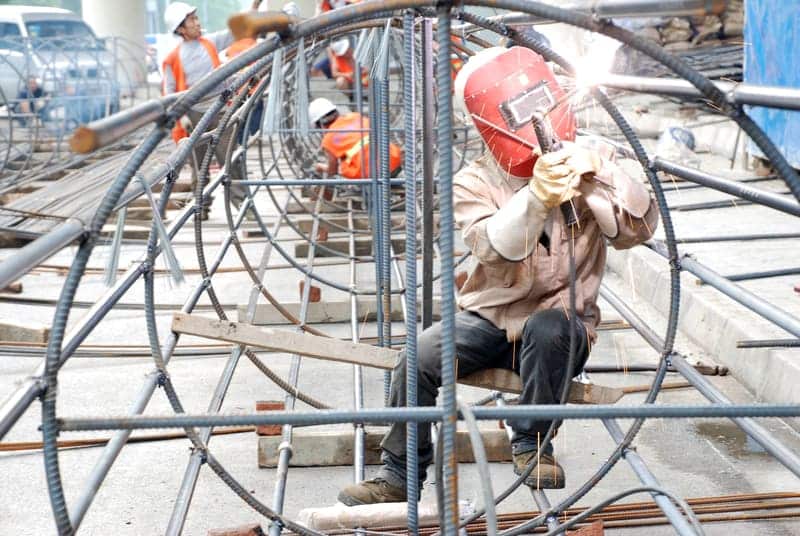
- Can I weld rebar? It’s okay to weld rebar, which has been graded as weld-able. In almost all cases, rebar that can be welded will have a ‘W’ grade that you should look for if you’re planning on welding the rebar in your project.
- What happens if I weld the wrong rebar into concrete? If you weld rebar, which isn’t supposed to be welded, and then encase the rebar into concrete, the concrete won’t have the tensile strength which it should have and will crack or break under load and stress.
- Can I weld the A615 rebar? A615 rebar is classified as high-strength alloy rebar and should never be welded because it is more likely to crack around welded joints. If you must weld A615 rebar, then it would require extensive pre-heating prior to welding.
- Are there different joint welds available? You have several different choices when it comes to welding rebar, but the three most commonly used are lap joints, butt joints, and splice joints. Typically, the engineering drawings will designate which type of joint is to be used and where.
- I have a lot of rebar sections to weld. What’s the best method? If you have a large amount of rebar to weld, particularly if you’re making pre-made pieces to be fitted together, a jig is a great idea. A jig allows you to hold the rebar in place while it’s being welded and can prevent distortion.
- If I weld rebar together and it ends up too bent, will it be, okay? The engineer will have pre-determined tolerances in place for the rebar. If you weld it and it moves outside of these tolerances, then it may need to be cut and rejoined in the correct position. In some situations, additional rebar may need to be added to strengthen the new joint.
How To Weld Rebar – Conclusion
There you go! Everything that you ever wanted to know about rebar, including what it is, the different types of rebar, and the best ways to weld rebar together. If you have any questions about welding rebar or share some tips about how you weld rebar, please don’t hesitate to comment below or contact us directly.
As with anything welding-related, it can take a little practice to get the hang of welding rebar, but once you do, you’ll be laying down weld like a professional. So be sure to practice on some scrap material or rebar first to get your temperature settings dialed-in perfectly.

